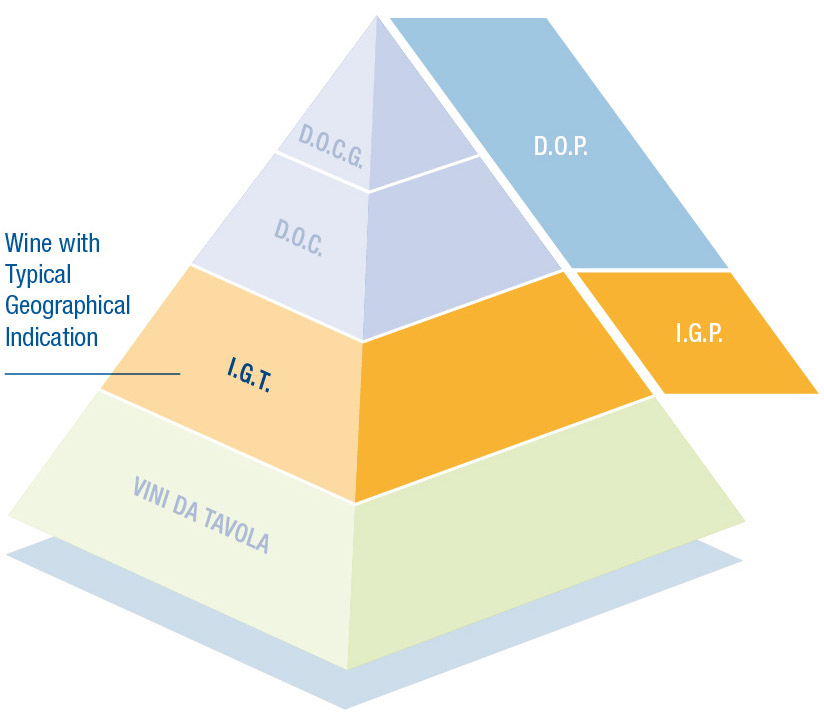
THE PYRAMID OF ITALIAN WINES – I.G.T. WINE
I.G.T. wines
On the second to last level of the pyramid there are the “Indicazione Geografica Tipica or I.G.T.” (Typical Geographical Indication) wines.
The main features of an I.G.T wine are the geographical area from which it originated (for example Latium or Veneto), the base grape variety (for example Chardonnay) and the vintage year. At least 85% of these wines are named after the geographical area they derived from.
Finally, I.G.T. wines must meet certain parameters that are indicated by production regulations, such as:
- the maximum yield of grapes per hectare;
- the transformation yield of grapes into wine;
- the minimum natural alcoholic proof;
- the alcoholic strength for consumption;
- the vines from which they can be obtained.
FROM AUGUST 1ST, 2009
I.G.T. become I.G.P. wines (Protected Geographical Indication) to use a single wording standardized for all European agri-food products (not just wine).
I.G.P. (P.G.I.) Protected Geographical Indication
It indicates the name of a region, a specific place or, in exceptional cases, a country that is used to describe a wine variety (that comes from that region, specific place or country) which possesses a specific quality, reputation, or other characteristics that are attributable to that geographical origin. At least 85% of the grapes that are used to make these wines come from this geographical area.
For wines with P.G.I., the demarcation of the wine-making grapes has been introduced. This means that it will no longer be possible to produce a wine with P.G.I. from grapes that are harvested in a region, but vinified in another (except for the 15% of the grapes that can come from outside the area). In addition to that, P.G.I. wines will be subjected to more stringent control procedures.
However, it is still allowed to use the acronym I.G.T. as it’s linked to the past and the Italian winemaking tradition.
